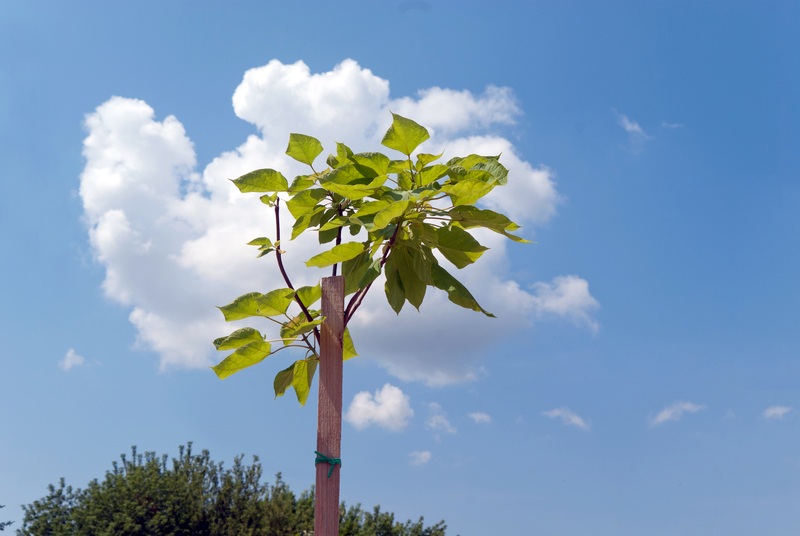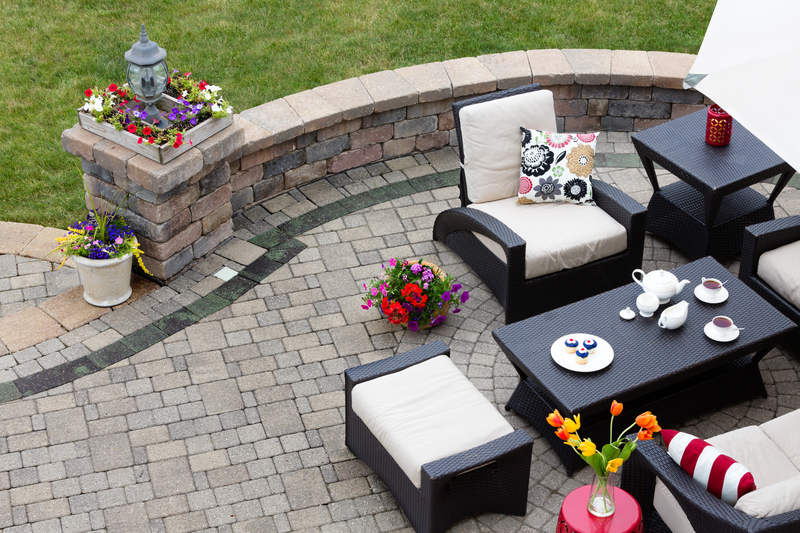The transformative world of container-based gardening
Posted on 22/08/2025
The Transformative World of Container-Based Gardening
Container-based gardening has rapidly emerged as one of the most dynamic innovations in the horticultural world. Adaptive, versatile, and endlessly creative, it offers a compelling alternative for urban dwellers, hobbyists, and even commercial growers interested in maximizing yields from minimal space. This article takes a comprehensive journey through the wonders of container gardening, uncovering practical benefits, inspiring ideas, and expert techniques to help you transform your living space -- inside or out -- into a flourishing green sanctuary.
Understanding Container-Based Gardening: More Than Just Pots
At its core, container-based gardening refers to the practice of growing plants in containers instead of in-ground soil beds. This seemingly simple shift has revolutionized gardening for those limited by space, soil quality, or climate. By leveraging pots, planters, bins, or even inventive repurposed vessels, almost anyone can cultivate everything from lush edible gardens to eye-catching ornamental displays.
- Space efficiency: Grow vertically or horizontally in confined spaces.
- Soil customization: Adjust potting mixes to suit specific plant needs (acidic for blueberries, neutral for herbs).
- Mobility: Move plants to follow the sun or shade, or protect from harsh weather.
- Pest and disease control: Isolate problem plants and reduce cross-contamination.

Why Container Gardening Is Transformative
The transformative world of container-based gardening goes far beyond convenience. It empowers individuals to take charge of their own food and floral production, regardless of location. In cities and suburbs where outdoor ground is a luxury, containers break the barriers previously imposed by concrete landscapes and compact living.
Key Benefits That Redefine Modern Gardening
- Accessibility: Ideal for people with limited mobility and for rental properties, as no digging or land modification is needed.
- Flexibility: Switch out plant arrangements for each season or special event.
- Aesthetic Enhancement: Instantly beautify decks, patios, balconies, driveways, or indoors spaces.
- Year-round Potential: Indoors or out, container gardens can thrive all year with proper care.
- Urban Sustainability: Contributes to urban greening, reduces heat, and promotes biodiversity.
Choosing the Right Containers
One of the most overlooked--yet crucial--factors in successful container-based gardening is the selection of the perfect vessel. The options are nearly limitless but must be approached thoughtfully to promote healthy plant growth.
Material Matters
- Terracotta and Clay: Classic charm and breathability, but dry out quickly and are heavy.
- Plastic: Lightweight, affordable, good water retention, variety of colors and shapes.
- Ceramic: Glazed types retain moisture, offer attractive finishes, but can be heavy and fragile.
- Metal: Durable, modern look, but may heat roots if exposed to sun.
- Wood: Rustic aesthetics; cedar and redwood resist rot best.
Size, Drainage, and Placement
- Size: Bigger containers hold more soil, which helps retain moisture and supports larger roots. Consider root depth needs for each plant.
- Drainage: Good drainage is essential; ensure pots have holes, or add layers of gravel if necessary.
- Placement: Ensure accessibility to sunlight, water, and protection from harsh elements.
Soil & Substrate Solutions for Container-Based Gardening
The key to thriving plants in containers is a quality potting mix. Unlike traditional garden soil, which is often too heavy and prone to compaction, containers require a blend that offers excellent drainage while retaining sufficient moisture and nutrients.
- Compost: Provides rich organic matter and nutrients.
- Peat moss or coco coir: Helps retain water and improve texture.
- Perlite or vermiculite: Enhances aeration and prevents waterlogging.
- Slow-release fertilizers: Maintain consistent nutrient supply without overfeeding.
Tip: Custom-blend your substrate for specialty plants. Succulents prefer sandy, well-draining soil, while vegetables often thrive in nutrient-rich mixes.
The Wide Array of Plant Choices
Thanks to its remarkable adaptability, container gardening enables you to grow a staggering variety of plants. Whether you're an aficionado of aromatic herbs, crave homegrown produce, or enjoy the delight of seasonal blooms, there's a container solution just for you!
Edible Container Gardens
- Herbs: Basil, thyme, oregano, cilantro, chives--keep them near your kitchen for fresh flavor at your fingertips.
- Vegetables: Tomatoes, peppers, lettuce, radishes, spinach, eggplant, and more flourish in pots.
- Fruits: Strawberries, blueberries, dwarf citrus, and even figs can be cultivated in large containers.
Ornamental and Decorative Possibilities
- Annuals and Perennials: Petunias, begonias, pansies, and geraniums provide long-lasting color.
- Tropical Plants: Palms, ferns, and ornamental grasses elevate balconies and interiors.
- Vertical Gardens: Use stacked pots or wall-mounted planters for ferns, ivy, or other cascading species.
Caring for Your Container-Based Garden
Success in the transformative world of container gardening relies on a few essential routines:
Watering
- Containers dry out faster than in-ground beds. Monitor moisture daily in hot weather.
- Water deeply until excess drains out the bottom, ensuring thorough root hydration.
- Self-watering planters and drip irrigation systems can automate the process.
Fertilizing
- Nutrients leach out faster in pots; use liquid or slow-release fertilizers regularly, based on plant requirements.
Pruning and Maintenance
- Remove dead or diseased foliage to promote airflow and deter pests.
- Pinch back leggy growth to encourage bushiness, especially in herbs and annuals.
Pest and Disease Control
- Monitor for bugs or mildew. Isolate affected plants quickly.
- Employ organic solutions such as neem oil or insecticidal soap when possible.
Innovative Trends in Container-Based Gardening
The transformative world of container gardening continues to inspire progress and creativity. Here are some of the latest movements shaping the field:
Smart Gardening Solutions
- Self-watering pots with moisture indicators reduce guesswork and conserve water.
- Hydroponic and Aquaponic container systems enable soil-less growing indoors or on rooftops.
- Apps & sensors for monitoring plant health, watering, and environmental conditions.
Upcycling and Eco-Friendly Practices
- Convert old buckets, tin cans, or wooden crates into stylish planters.
- Use biodegradable liners and sustainable materials.
- Implement companion planting to naturally reduce pests and enhance yields.
Designing Your Space with Containers
The beauty of container-based gardens lies in their adaptability. Use them to shape your environment, create privacy, and express personality.
- Group containers of varying heights and textures for a dynamic, layered look.
- Choose color schemes: monochrome for elegance, bold mixes for vibrancy.
- Incorporate vertical elements with trellises or stackable planters for climbing vegetables or flowers.
- Add lighting around evening seating areas for ambiance and safety.
Solving Common Challenges in Container Gardening
While immensely rewarding, container gardening presents unique hurdles. Here's how to tackle the most frequent issues in the container-based gardening world:
Root Bound Plants
- Roots circling within a small pot can lead to stunted growth. Repot annually or split root balls to revitalize plants.
Overwatering & Underwatering
- Check soil moisture by touch; install saucers only if you watch for standing water.
Sunlight Issues
- Observe and adjust placement; use wheeled bases for large pots to catch light shifts throughout the season.
Nutrient Depletion
- Refresh potting mixes and fertilize regularly to ensure continued growth and blooming.
The Social and Environmental Impact of Container-Based Gardening
The rise of container gardening signifies more than just a trend; it marks an important shift toward sustainability, self-sufficiency, and community well-being. From school courtyards to urban rooftops, container-based gardens foster environmental education, reduce household food bills, and offer therapeutic benefits for mental health.
- Greening Urban Spaces: Container gardens reduce urban heat, support pollinators, and clean the air.
- Educational Value: They teach children and adults about ecology, nutrition, and stewardship.
- Community Building: Shared container gardens promote neighborhood connections and food security.

Getting Started: Tips for New Container Gardeners
- Start small -- a few pots of herbs or flowers will quickly build your confidence.
- Invest in quality potting soil; don't reuse old soil without replenishing nutrients.
- Label your plants for easy care instructions and harvesting.
- Monitor water and sunlight during the first few weeks to fine-tune your routine.
Resources for Learning More
- Check with local nurseries for container-ready plants and expert advice.
- Join online gardening communities to swap tips and celebrate successes.
Conclusion: Embrace the Transformative Power of Container-Based Gardening
In a world where space and resources are at a premium, container-based gardening offers a pathway to vibrant, productive, and beautiful green spaces--anywhere. Whether you aspire to grow your own food, beautify a balcony, or harness the therapeutic power of plants, embracing this transformative gardening method invites creativity and growth, both for the garden and the gardener.
Ready to start your journey into the world of container gardening? All you need is a container, a handful of soil, and a dash of enthusiasm--the rest is up to nature and your imagination.
```
